
All wrestling fans know that WrestleMania is WWE's biggest PPV. We look forward every year to the moments that will be made and the memories that will last with us forever.
Who can forget the spectacle of Hulk Hogan versus Andre the Giant at WrestleMania III in front of more than 90,000 people in the Pontiac Silverdome? Or 'The Ultimate Challenge' between Hogan and The Ultimate Warrior at WrestleMania VI? The list can go on and on.
The feeling of anticipation is not exclusive to just the fans. The superstars that perform on the show are always looking to make their mark on the Grandest Stage of Them All. For some, WrestleMania can be a platform that launches their careers to new heights. For others, those memorable moments are few and far between.
Insane Vince McMahon ideas that got canceled - Watch Here!
The world of professional wrestling is a perilous one. We have enough evidence to prove this point if we look back at the superstars and matches that comprise a WrestleMania card over the last 36 years.
A lot can change in 365 days. Every year, a superstar could see their position on the card, and in the company itself, change dramatically.. Here are seven stars who have had some of the biggest WrestleMania rises and falls in just one year.
WrestleMania Fall: Randy Savage
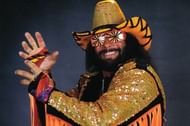
WrestleMania VIII - WrestleMania IX
Randy Savage’s career took a hard left turn between 1992 and 1993 in the then-WWF.
At WrestleMania VIII, Savage was part of the double main event and captured the WWF Championship for the second (and last) time from Ric Flair in grand fashion. The Macho Man had a six-month reign with the title before dropping it back to Flair in September of that year.
Despite this, he still managed to main event Survivor Series in November. He also played a prominent role in the 1993 Royal Rumble, being the last man eliminated by winner Yokozuna.
However, things had obviously changed by WrestleMania 9, a few months later. Savage’s role in the show was limited to that of an announcer. Worse still, he essentially played the third wheel in the booth to Jim Ross and Bobby Heenan.
Savage would not make an in-ring appearance at any pay-per-view in 1993 bar Survivor Series.
Whose idea it was to move Savage to the announcer’s table has been debated for years. Some say it was Savage’s own lack of desire to perform regularly in the ring. Others say Vince McMahon believed Savage’s worth as an in-ring performer had declined.
Savage left the company the following year and returned to full-time in-ring status in WCW.
WrestleMania Rise: Billy Gunn
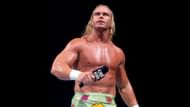
WrestleMania 13-WrestleMania XIV
After a solid but unspectacular run as a member of the Smoking Gunns team in the mid-'90s, Billy Gunn found himself floundering as a singles competitor in early 1997. Taking on the Honky Tonk Man as a mentor and adopting the moniker of “Rockabilly” had not done him any favors creatively.
When the time came for WrestleMania 13 that year, the best Gunn could find himself on the card was getting a win over Flash Funk in a pre-show match on the “Free For All'' before the actual pay-per-view.
However, in October of that year, things started to take a positive turn for Gunn. He broke away from the Honky Tonk Man and formed a team with another misguided character, Jesse James.
Now known as the New Age Outlaws, “Bad Ass” Billy Gunn and Road Dogg quickly rose up the tag team ranks. They won the Tag Team Titles in November of 1997 from the Legion of Doom.
After subsequent wins over LOD, and rubbing elbows a few times with the likes of Shawn Michaels and Triple H, the Outlaws found themselves in a major feud with Cactus Jack and Chainsaw Charlie (Terry Funk). The feud culminated in a Dumpster Match at WrestleMania 14.
Despite losing the titles that night, the match was one of the marquee attractions for that year’s event.
Then, the next night on Raw, some fuel was really added to the fire. The New Age Outlaws not only won the Tag Team Championships for a second time by defeating Chainsaw and Cactus in a Steel Cage match, but became official members of D-Generation X.
The Outlaws joined Triple H, Chyna, and X-Pac to form what would go on to be one of the most popular groups in wrestling history.
WrestleMania Fall: Bam Bam Bigelow
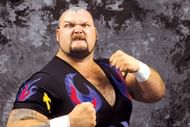
WrestleMania XI - WrestleMania XII
How many wrestlers can you think of that main event WrestleMania one year, and are gone completely from the company by the next? This was the case with Bam Bam Bigelow.
Bigelow is often regarded as one of the best “big men'' in wrestling history. During his second run with the WWF in the mid-'90s, Bigelow was a perennial upper mid-card heel. He eventually became a member of Ted Dibiase’s Million Dollar Corporation in the summer of 1994.
At the 1995 Royal Rumble, Bigelow had an altercation with football great and former New York Giants linebacker Lawrence Taylor, who was a guest at ringside. This led to an actual match between Bigelow and Taylor at that year’s WrestleMania XI.
While some may argue that the WWF Championship match between Diesel and Shawn Michaels was the “real” main event, Bigelow and Taylor did go on last at the show. Their match was a mainstream media magnet.
Bam Bam Bigelow faced Lawrence Taylor in the main event of WrestleMania XI
Bigelow was praised backstage for his attitude and being able to carry LT to a passable match. According to reports, Bigelow was said to have been promised a big babyface push as a reward for his efforts. While Bigelow did turn face not long after WrestleMania, he never quite reached main event level status. He negotiated an early release from the WWF in late 1995 due to unhappiness with his creative direction and position in the company.
By the time WrestleMania XII rolled around in 1996, the main event antagonist from the prior year had been gone from the company for almost five months and was appearing sporadically in ECW!
WrestleMania Rise: Steve Austin
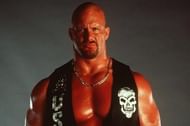
WrestleMania XII-WrestleMania 13
Steve Austin deserves a place on the Mount Rushmore of the WWE, but his career in the company didn't start with such promise.
Austin debuted as The Ringmaster in late 1995 with Ted Dibiase as his manager and was even given the Million Dollar Championship to boot.
At Wrestlemania 12 in 1996, Austin defeated Savio Vega. While the match was solid, it was a far cry from what would be in store for Austin at the following year’s event- a Submission Match against Bret Hart.
Steve Austin faced Bret Hart at WrestleMania 13 in a Submission Match
By March of 1997, “The Ringmaster” was gone, and “Stone Cold” was undeniably here to stay.
Austin’s match with Hart is arguably one of the best matches in WrestleMania history. Not only was the in-ring work top-notch, but it was also notable for being the final step in turning Austin into the anti-hero babyface that would catapult his career to the next level. It also provided the unforgettable visual of Austin “bleeding like a stuck pig” while in the Sharpshooter but never giving up.
Austin was a made man following WrestleMania 13. His momentum would reach a crescendo at the following WrestleMania in 1998 when he became the WWF Champion for the first time.
WrestleMania Fall: Demolition
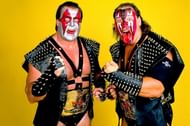
WrestleMania VI- WrestleMania VII
There is usually always a conundrum when it comes to Demolition. Some fans feel they were WWF rip-offs of the Road Warriors. Others (like me) who grew up only seeing WWF programming on their TV stations would contend that Demolition was the first “power and paint” team they ever saw dominate the tag team scene. Regardless, the fact is that Ax and Smash personified the tag team ranks in the WWF in the late '80s and on into 1990.
At WrestleMania 6 in Toronto, Demolition would defeat the Colossal Connection to regain the tag team titles. In doing so, Demolition garnered the biggest crowd pop of the night aside from Hulk Hogan or Ultimate Warrior. Demolition was OVER.
Demolition won the Tag Team Titles to a huge ovation at WrestleMania VI
Fast forward just one year, and things looked very different for the team. In fact, the team LITERALLY looked different.
By 1991, no longer was Demolition composed of Ax and Smash, but a twosome of Smash and Crush. They also once again had Mr. Fuji at their side and were back on the heel side of the division.
Moreover, at WrestleMania 7, Smash and Crush were defeated soundly. And not by a WWF stalwart team like the Legion of Doom or the Rockers, but by Genichiro Tenryu and Kōji Kitao, two Japanese competitors on loan from the Super World of Sports promotion. This would essentially be Demolition's last major appearance in the company
Quite a stark contrast for a team that was a staple of the WWF and one of its most popular acts just one year prior.
WrestleMania Rise: Bret Hart
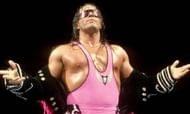
WrestleMania VII through WrestleMania IX
I admit that I’m cheating just a bit with this entry because it spans two years. However, reviewing the career trajectory of Bret Hart from 1991-1993 is a master class in elevating a talent. Just by simply looking at Hart’s matches on the cards of WrestleMania 7, 8, and 9, the movement up the company ladder is clear as day.
Bret Hart's stock continued to rise over the course of consecutive WrestleManias in the '90s
At WrestleMania 7, Hart competed as a member of the Hart Foundation, coming into the event as the Tag Team Champions. He and Jim Neidhart would drop the titles to the Nasty Boys on the show.
At WrestleMania 8 a year later, Hart wins the Intercontinental Championship for a second time from Roddy Piper. This was Piper's first pinfall loss in the WWF.
Then in 1993, Hart was main eventing WrestleMania 9 as the WWF Champion, albeit in a losing effort against Yokozuna.
From tag champion to mid card champion, to THE champion in consecutive years, the ascension could not be more evident. In fact, it would be easy to extend this example out even further to the following year in 1994. At WrestleMania X, Hart regained the WWF Championship from Yokozuna and cemented himself as the flag bearer for the “New Generation.”
WrestleMania Rise: The Rock
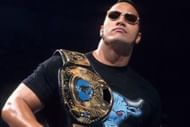
WrestleMania XIV-WrestleMania XV
By early 1998, there was no denying that The Rock was on the come-up. He was the reigning Intercontinental Champion and was soon to become the de facto leader of the New Nation.
At WrestleMania XIV he defended his IC Title against Ken Shamrock in an entertaining, albeit mid-card, matchup. While he was clearly earmarked for bigger and better things, The Rock wasn't quite there yet at the time.
The Rock was a WrestleMania headliner for the first time at WrestleMania XV
Fast forward one year later, and those “bigger and better” hopes for Rock had come to fruition.
Instead of being the Intercontinental Champion, The Rock came into WrestleMania XV as the WWF Champion and was cemented as a main event player.
The Rock headlined the show for the first time in his career, defending his championship against Steve Austin. This would be the first of three WrestleMania matches The Rock and Austin would share together. The Rock never looked back on his way to superstardom over the next twenty years.
Make Sportskeeda your preferred choice for WWE content by clicking here: Source preferences

